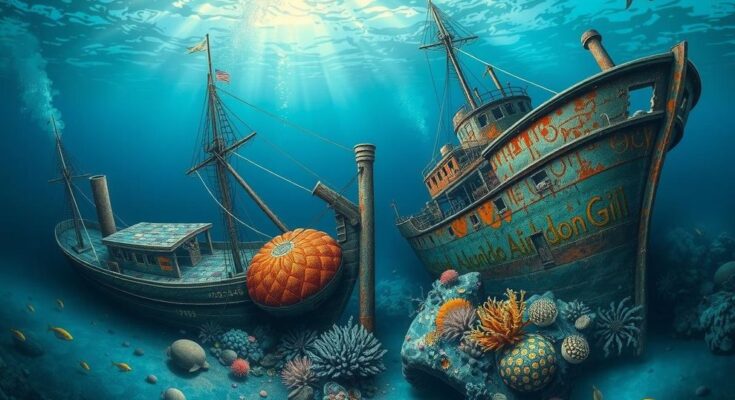The depths of our oceans are not just waters; they are a treasure trove of cultural heritage ripe for protection. A coalition of NGOs and Indigenous groups is gathering at a pivotal meeting in Jamaica with the International Seabed Authority (ISA) to advocate for the safeguarding of this heritage within the framework of a new mining code. This initiative seeks to govern how the ocean floor can be mined, ensuring that the sacred relics of sunken ships, remnants of the transatlantic slave trade, and the spiritual ties of Indigenous islanders are preserved.
Hinano Murphy from the Tetiaroa Society passionately remarked, “Our ancestors traveled the oceans for thousands of years… We are the children of the people of the ocean,” underscoring the sanctity of this underwater heritage. Advocates argue that while marine life faces imminent threats from industrial mining, the cultural narratives embedded in these underwater sites warrant equal urgency in their protection. Salim Lahsini, representing African nations, emphasised that, “the underwater cultural heritage is a living memory of the generations that came before us. Its protection must be a priority equal to the protection of marine biodiversity.”
The proposed mining code includes stipulations requiring companies to notify the ISA upon discovering human remains or archaeological sites. However, a consensus on the details surrounding these findings remains elusive. April Nishimura, a Gitxsan Indigenous representative, highlighted her concern, lamenting that defining heritage solely by shipwrecks diminishes its broader significance.
In response, Micronesia’s initiative seeks to broaden the definition of underwater heritage to include both tangible assets like shipwrecks and human remains, as well as intangible elements such as traditional navigation knowledge and spiritual customs. The Pacific remains a hotspot for mining development, but interest is also shifting towards the Atlantic due to its unique undersea deposits.
The ocean holds countless narratives, including those of ships lost to time and the tragic legacies of the slave trade. Lucas Lixinski, a law professor, noted that many enslaved individuals perished during their maritime journeys, their bodies cast into the waters—a stark reminder of history’s turmoil. The challenge, however, lies in addressing these intangible elements within the mining regulations. Establishing a checkpoint before any mining activity is key to safeguarding these connections to heritage.
The Micronesian-led working group suggests forming a dedicated committee to represent Indigenous communities, partnering with the ISA to evaluate the impact of mining projects on cultural sites. Charlotte Jarvis, a maritime archaeologist, underscores the significance of collecting precise data to protect these underwater treasures. “We know the best way to collect that data… so getting good data ahead of time will be key,” she shared.
In this dance between progress and preservation, the fate of undersea cultural heritage hangs in the balance, demanding our respect and diligence in safeguarding the stories of our ancestors for generations to come.
At the ISA meeting in Jamaica, NGOs and Indigenous groups are advocating for the protection of underwater cultural heritage in the new mining code governing sea bed exploitation. The importance of safeguarding relics like sunken ships and the narratives they hold is emphasised amidst concerns over marine ecosystem threats and the need for preserving spiritual connections to the ocean. Proposed measures include defining underwater heritage more broadly and establishing committees to guide mining impacts on cultural sites.
The ongoing discussions at the ISA meeting highlight the urgent need to protect undersea cultural heritage alongside marine biodiversity amidst the looming threat of industrial mining. With voices from Indigenous communities and concerned NGOs echoing the call for protection, the proposed mining code aims to establish a framework that respects both tangible and intangible aspects of underwater heritage. Moving forward, the collective commitment to preserve this cultural legacy is imperative as we navigate the complexities of ocean resource exploitation.
Original Source: www.inkl.com



